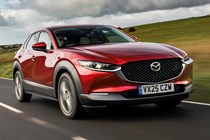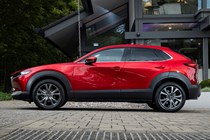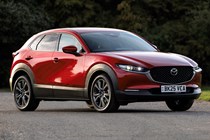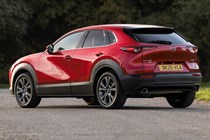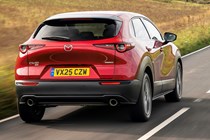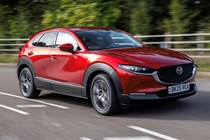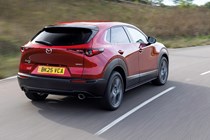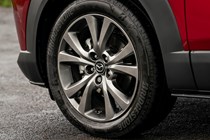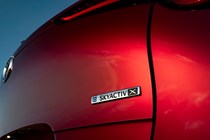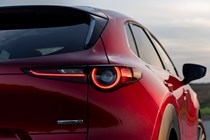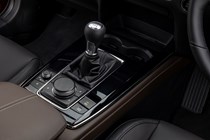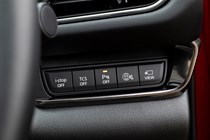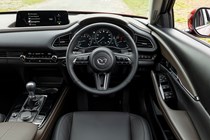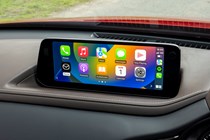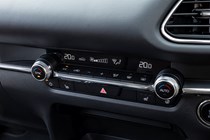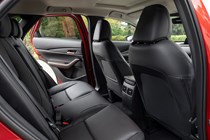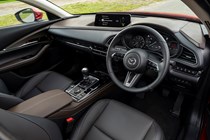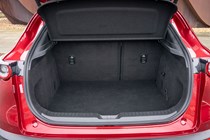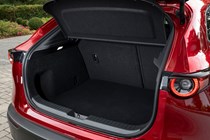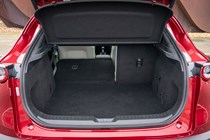
Mazda CX-30 engines, drive and performance
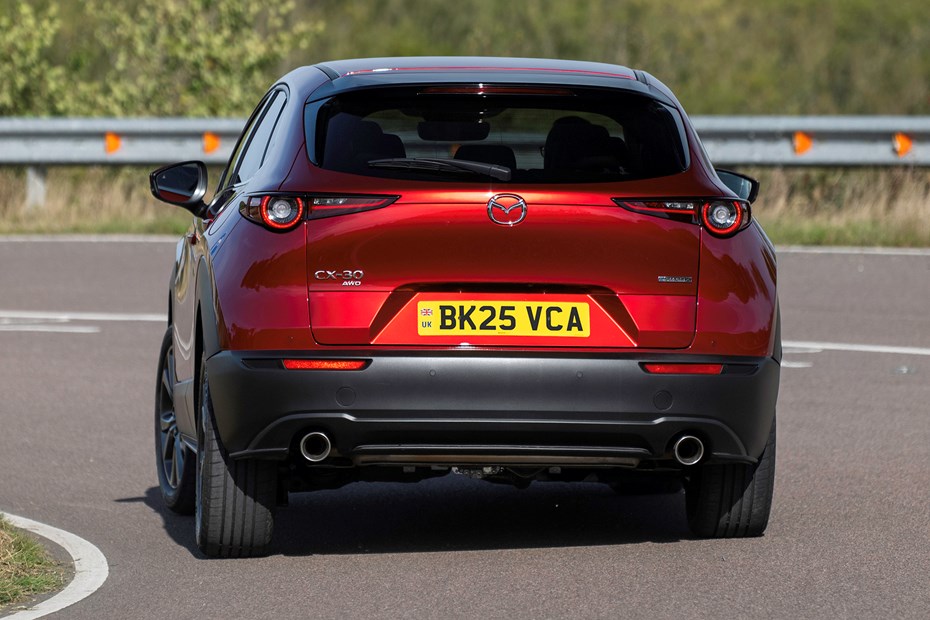
- Two engines, front- and four-wheel drive available
- Both are petrol, both use mild-hybrid tech
- Larger than average, decent acceleration for both
Mazda CX-30 petrol engines
Two engines are available. Both feature mild-hybrid technology to recover wasted energy and improve efficiency overall, which can also offer a small performance boost when required. Either engine is available with a very sweet-shifting six-speed manual or a six-speed automatic with Sport mode that improves responsiveness. If you want four-wheel-drive, you’ll need to pick the SkyActiv-X engine.
Speaking of that, the SkyActive-X is the range topper, with the latest version of the SkyaActiv-G acting as the entry-level choice. In reality, it feels odd speaking of the SkyActiv-G in these terms given it’s a generous 2.5 litres in capacity. It’s up against 1.0- to 1.5-litre rivals, so that’s very unusual – but Mazda’s view is that easy power and efficiency are what drivers want.
It develops 140hp – an 18hp increase over its predecessor – which is good for a 0-62mph time of 9.7 seconds (manual) and 10.3 seconds (auto), both a little quicker than before. It’s a car that’s easy to drive, rarely needing to be revved to keep up with the flow, although it’s never really going to excite either. We like it, though, finding it very easy to live with and a lot livelier than the outgoing engine.
The SkyActiv-X is unchanged, and remains the more powerful choice of the two, featuring clever compression ignition technology. The benefit here is that it uses fuel like a diesel, to offer petrol-like performance with impressive fuel efficiency. Headline power is 186hp, and it feels a good chunk quicker than the SkyActiv-G.
It’s not perfect, though. It’s blessed with a slightly gruff soundtrack that settles down once moving. The long gearing, specified for maximising fuel economy, can leave it feeling quite lethargic unless you rev it hard. Even when you settle down to a cruise on the motorway, you sometimes need to change out of sixth gear on hills – turbocharged rivals are less bothered by such things.
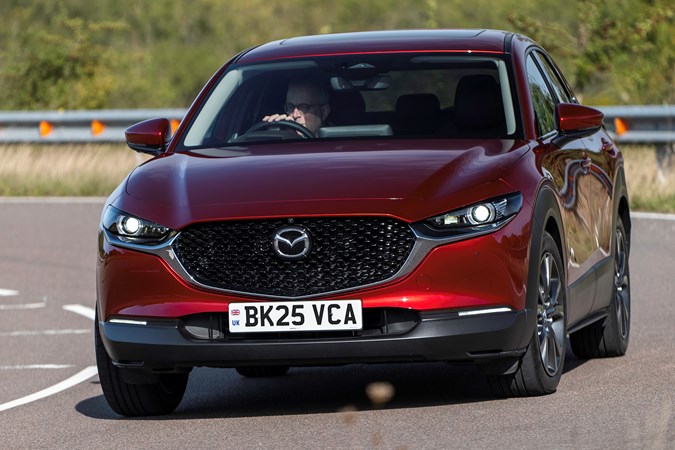
What’s it like to drive?
- Good handling is a Mazda hallmark, even on its SUVs
- CX-30 feels well-controlled but still comfy
- An excellent all-round performer
Being fun to drive is pretty much a staple of Mazda’s whole brand identity, so it’s no surprise the CX-30 is up there as one of the best in its class in this regard. Bodyroll is well contained and the steering is sweet. It’s not the sharpest, but remains precise enough, and is probably the most agile-feeling small SUV this side of a Ford Puma.
In short, steers, brakes and corners in the same assured way as the 3 hatchback it’s so closely based on. We like how it is easy to thread down country lanes, and handles without vices in tricky road conditions – making this is a safe choice for drivers who like to have a cheeky bit of fun now and then. In a nutshell, it proves that the best small SUVs don’t have to be boring to drive.
The cabin is refined even at speed, with both engines nicely muted most of the time. We’ve covered several thousand miles in the CX-30 in some trying conditions and it was calm, quiet and serene over most speeds and road surfaces. Wind noise is limited to a distant flutter by the door mirrors, though things do get blustery with the windows cracked.
One downside is that the brake pedal feels heavy and it requires a good shove to get it to stop. This is because of the mild-hybrid system that draws in energy from the brakes to put back into a 24v battery.


